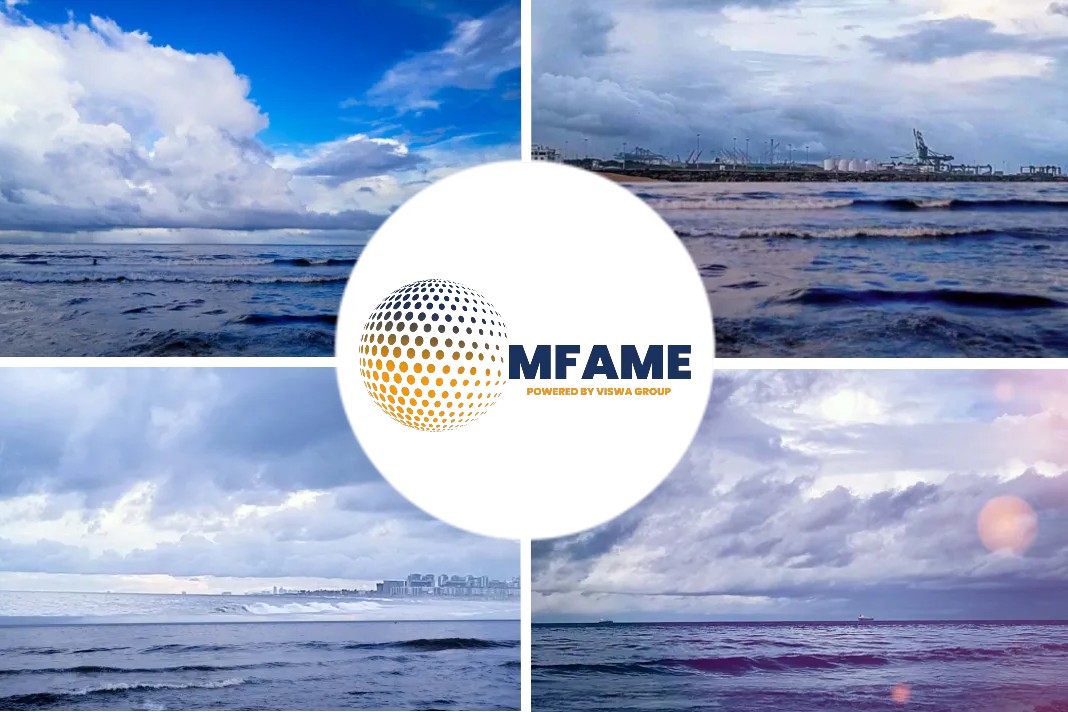- Converting boxships to methanol & ammonia is feasible and cost-effective.
- Maersk Mc-Kinney Møller Center for Zero Carbon Shipping iterated citing findings of a new report.
- Numerous questions remain to be answered.
As the industry moves to decarbonize its fleet, numerous questions remain to be answered on the best pathways for shipowners given the uncertainty in relation to the future fuel landscape. In such a scenario, Maersk Mc-Kinney Møller Center for Zero Carbon Shipping cites findings of a new report which remarks that converting containership vessels to alternative fuels is technically and economically feasible.
Highlights of the Report
The report takes a deep dive into the technical, environmental, and techno-economic impacts of preparing container ships for conversion to green fuels in an attempt to de-risk investment decisions and provide shipowners with answers on what converting boxships to ammonia or methanol would entail. The highlights build upon the results of the ‘Green Fuels Optionality Project’, which used insights from a number of project partners to determine the technical requirement and costs of converting from fuel oil to methanol or ammonia or LNG to ammonia for containerships, bulkers and tankers.
Conversion of Fuel Oil to Ammonia or Methanol
The project found that the accommodation was the most optimal location for the alternative fuel tanks on the boxship, as this position has the smallest impact on cargo space. When ships aren’t prepared, methanol or ammonia tanks must be installed in the cargo space during conversion. According to the project findings, methanol and ammonia dual fuel newbuilds should cost approximately 11 and 16% of a standard newbuild cost, respectively. “We also calculated that conversion from fuel oil to a full-range methanol or ammonia dual-fuel vessel costs 10-16 and 19-24% of a standard newbuild cost, respectively, depending on the level of preparation at newbuild…” the center said.
Methanol and ammonia have a lower calorific density than fuel oil, so they require larger tanks to provide the same range as fuel oil vessels. As a result, converting to full-range dual fuel vessels using these designs reduces cargo space by 240-610 and 530-1100 TEU for methanol and ammonia, respectively, with conversion of unprepared ships sacrificing most space. The center said that it modeled the impacts of lost cargo space on the total lifetime costs of converted vessels using its techno-economic model, which included add-on newbuild costs, conversion costs, and cargo loss costs. “Our model showed that fully capable dual fuel newbuilds with full-sized tanks integrated from newbuilding are the most cost-effective option…” the center added.
The center further pointed out that conversion costs and cargo losses can be reduced by converting to a reduced alternative fuel range. The proposed reduced range designs have a tank capacity of 10,000 m3 for methanol and 7.800 m3 for ammonia. Although the range is significantly reduced, it is believed to be sufficient for traveling between Singapore and Southern Europe on ammonia. Reduced range conversions also lower cargo loss and total costs. Therefore, converting to reduced range methanol-fuel oil vessels becomes cost-effective compared with building a full range dual fuel newbuild after just 4 years.
Converting to Ammonia From LNG
Converting from LNG to ammonia is less complex than converting from fuel oil to ammonia, as many of the gas-related systems required for ammonia are already in place. In cases where the existing LNG tanks cannot be prepared for ammonia, it will not be practically possible to replace the LNG tanks located under the accommodation, and as a result, conversion to ammonia would not be feasible. The center proposed designs for conversion to full range on ammonia (20,000 m3 LNG/ammonia tank) and reduced range (12,000 m3 LNG/ammonia). After conversion, these ships become ammonia-fuel oil dual fuel vessels and can no longer operate on LNG.
According to the report, the designs which prepare the vessels for later conversion, increase the cost of a newbuild by 7% and 2% for full range and reduced range, respectively, compared to a standard LNG-fuel oil newbuild. “The additional costs of preparing a vessel for LNG, a larger tank for ammonia operation, and then converting to ammonia make this strategy relatively expensive…” the report said.
Did you subscribe to our daily Newsletter?
It’s Free! Click here to Subscribe
Source: OffshoreEnergyBiz


























